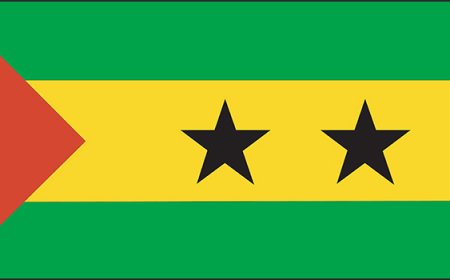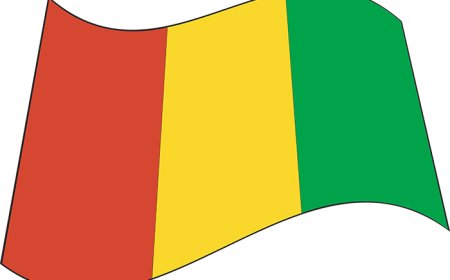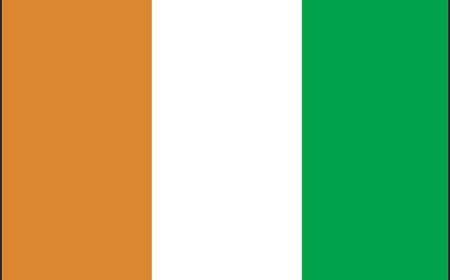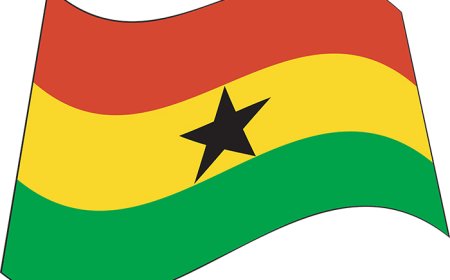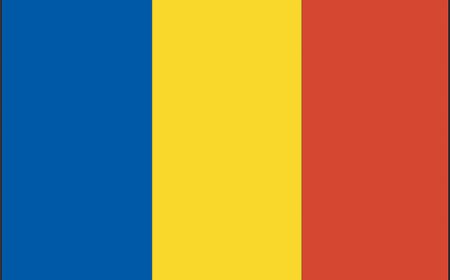Benin for Students: Geography, History, and Culture of a West African Nation
Explore Benin’s ancient kingdoms, voodoo traditions, and modern culture in this student-friendly country article. Includes vocabulary and quiz
🌍 Introduction: A Small Country with a Storied Past
Benin is a small country on the West African coast, rich in history and culture. Once home to powerful kingdoms like Dahomey, Benin played a major role in the history of the region. It is also known as the birthplace of voodoo, a traditional religion that has spread to the Caribbean and the Americas.
Today, Benin is a peaceful and democratic country working to improve education and the economy. From its golden royal palaces to the colorful festivals in its towns and villages, Benin offers a glimpse into both ancient traditions and modern African life.
🗺️ Geography and Environment
Benin is located in West Africa, bordered by Togo to the west, Nigeria to the east, Burkina Faso and Niger to the north, and the Atlantic Ocean to the south. Although it is long and narrow in shape, Benin’s geography is diverse and stretches across tropical coastal plains, rolling hills, and wooded savannas.
The country’s total area is about 114,000 square kilometers (44,000 square miles). The southern region is wetter and has a tropical climate, while the north is hotter and drier. Rivers such as the Ouémé River and Niger River provide water for farming and fishing.
The coastline includes lagoon systems and sandy beaches, and inland you’ll find marshlands, forests, and savanna grasslands. Because of these different environments, Benin supports a range of animals, crops, and traditional ways of life.
🏛️ Government, Language, and Population
Benin is a republic with a president elected by the people. It has a stable and peaceful democracy and is often considered one of the most politically stable countries in West Africa. The capital city is Porto-Novo, but the largest city and economic center is Cotonou, which serves as the main port and hub of business.
The population of Benin is around 13 million people, made up of more than 40 ethnic groups. These include the Fon, Yoruba, Bariba, and Aja peoples. Each group has its own language and cultural traditions.
Although the official language is French, due to Benin’s colonial past, many people speak local African languages, including Fon, Yoruba, and Bariba. The main religion is Christianity, followed by Islam and traditional African religions, especially voodoo (or vodun), which is officially recognized in Benin.
The national currency is the West African CFA franc (XOF), which is shared with several other West African countries.
🎭 Culture and Daily Life
Beninese culture is known for its music, dance, art, festivals, and spiritual traditions. One of the most unique features of Benin is its celebration of vodun (voodoo), which is practiced by many people in the country. This religion honors spirits, ancestors, and natural forces through ceremonies, music, and dance. The annual Voodoo Festival in the coastal town of Ouidah draws visitors from all over the world.
Benin is also famous for its traditional masks and sculptures, which are used in rituals and as art. Brightly colored clothing, including handwoven fabrics and beaded jewelry, are commonly worn during festivals and ceremonies.
Music is a big part of everyday life, with styles ranging from traditional drumming to modern Afropop. Instruments like the talking drum, balafon, and kora are used in performances and storytelling.
Beninese food is spicy and flavorful, often made with rice, corn, beans, cassava, fish, or goat meat. A common dish is akassa, a fermented corn dough served with sauce. People also enjoy fufu, a starchy dish served with soup, and grilled fish from the coast.
📜 History: The Kingdoms of Dahomey and Beyond
Benin has a long and fascinating history. Before it became a modern country, it was home to powerful kingdoms such as the Kingdom of Dahomey, which ruled from the 1600s to the late 1800s. The kings of Dahomey built large palaces, led strong armies, and controlled trade routes across West Africa.
One of the most famous parts of Dahomey’s history is the Agojie, a powerful all-female military unit that protected the kingdom. They are often called the “real-life warrior women of Africa” and inspired movies and stories in modern times.
Dahomey traded gold, ivory, and slaves with Europeans, especially the Portuguese and French. In the late 1800s, France took control of the region, and it became a French colony known as French Dahomey.
Benin gained independence peacefully in 1960 and changed its name from Dahomey to Benin in 1975. Since the 1990s, it has been one of Africa’s strongest democracies, holding regular elections and supporting civil rights.
💰 Economy and Resources
Benin’s economy is based on farming, trade, and regional transport. Most people work in agriculture, growing crops such as cotton, maize (corn), cassava, rice, and pineapples. Cotton is the main export, and farmers often use traditional tools and techniques.
Fishing and livestock raising are also important in rural communities. In the cities, people work in markets, small shops, transportation, education, and public services.
Benin has few natural resources, but its ports and highways serve as key trade routes for neighboring countries like Niger and Burkina Faso. The government is working to grow the economy through tourism, education, and digital technology, while also improving schools, roads, and access to clean water.
🌿 Wildlife and Natural Beauty
Benin is home to beautiful natural parks and wild animals, especially in the north. The Pendjari National Park, part of the W-Arly-Pendjari Complex, is a UNESCO World Heritage Site and one of the best places in West Africa to see wildlife. The park is home to elephants, lions, hippos, antelope, monkeys, and hundreds of bird species.
In the south, mangrove forests and lagoons provide homes for fish, crocodiles, and migrating birds. Environmental protection is growing in Benin, especially as climate change and human activity affect local habitats.
Many tourists visit Benin for both its natural beauty and its historical landmarks, including the Slave Route in Ouidah, which honors the memory of Africans taken during the transatlantic slave trade.
📚 Vocabulary List
Word Definition
Voodoo (Vodun) A traditional religion that honors spirits and ancestors
CFA franc The currency used in many West African countries
Akassa A traditional Beninese food made from fermented corn
Agojie A historical all-female military unit in Dahomey
Lagoon A shallow body of water separated from the sea
Palaces Homes or buildings used by royalty
Colonization Control of one country by another, often by force
Independence Freedom from being ruled by another country
Pendjari A national park known for African wildlife
Artisan A skilled craftsperson or artist
🧒 Kid-Friendly Summary
Benin is a small country in West Africa full of exciting history and culture. A long time ago, it was home to the Kingdom of Dahomey, where brave women soldiers helped protect the king. Today, Benin is a peaceful country where people speak many languages, go to school, and celebrate traditions like voodoo. Visitors can see lions in the wild, taste spicy food, and hear music played on drums and strings. Whether exploring palaces or watching dancers at a festival, there’s always something to discover in Benin.
🎯 Quiz: What Do You Know About Benin?
1. What is the capital of Benin?
a) Cotonou
b) Porto-Novo
c) Abidjan
d) Bamako
✅ Answer: b) Porto-Novo
2. What is the traditional religion that began in Benin?
a) Christianity
b) Islam
c) Voodoo
d) Buddhism
✅ Answer: c) Voodoo
3. What major product does Benin export the most?
a) Oil
b) Cotton
c) Coffee
d) Gold
✅ Answer: b) Cotton
4. What is the name of the female warrior group from Dahomey?
a) Amazons
b) Agojie
c) Nubians
d) Valkyries
✅ Answer: b) Agojie
5. What language is used in schools and government in Benin?
a) Yoruba
b) English
c) French
d) Arabic
✅ Answer: c) French
🏫 National Education Standards Covered
Geography: NGS Standards 1, 4, 6, 10, 13
History: NSH Historical Thinking 1, 2, 3; Eras 1, 6, 7, 9
Social Studies (C3): D2.Geo.4-8, D2.His.1-8
Literacy (Common Core): RI.6.1, RI.6.2, RI.6.4, RH.6-8.7


















































